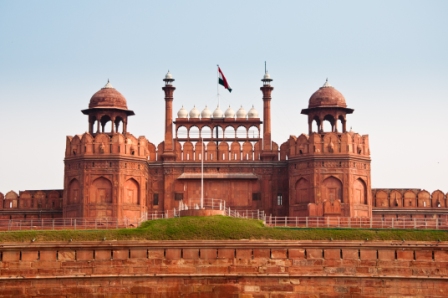 The Indian currency has lost 13% since January 2013. This fall, one of the largest in Asia, comes in the midst of a difficult economic environment in India, which recorded its weakest growth in 10 years (around 5%) in 2012-2013, weak exports and foreign capital outflows. The current situation leads to a distrust by the investors who have shied away from the third power of Asia and redirected their resources to the United States. The outward flight of foreign capital from India has forced Indian banks to take measures to tighten liquidity by reducing the amounts of loans or loans authorized by the banks.
The Indian currency has lost 13% since January 2013. This fall, one of the largest in Asia, comes in the midst of a difficult economic environment in India, which recorded its weakest growth in 10 years (around 5%) in 2012-2013, weak exports and foreign capital outflows. The current situation leads to a distrust by the investors who have shied away from the third power of Asia and redirected their resources to the United States. The outward flight of foreign capital from India has forced Indian banks to take measures to tighten liquidity by reducing the amounts of loans or loans authorized by the banks.
What is the impact on the exchange rate?
“We are focusing on reducing the volatility of the exchange rate, as it is at the expense of growth prospects,” insisted Duvvuri Subbarao, governor of the central bank during a press conference on July 31 2013.
Indeed, the impact of India’s fluctuating exchange rate on the euro and the dollar in particular, are significant. India is one of the cheapest countries across Asia. The euro is currently at 91.6 rupees and one USD equates to 68 rupees. Traveling and purchasing in India is now extremely advantageous for Westerners given the current situation.
If inflation is real in India and especially in the case of petrol, the purchasing power of tourists is increasing and makes some very interesting business in the country of trading.
In spite of some restrictions on foreign banks for cash withdrawals allowed per day, everyday spending by tourists can show a real upheaval. So you can purchase a leather jacket for 3000 rupees (32 euros) or leather bags for 2000 rupees (21 euros). It is the same with regard to food. A kilogram of tomatoes can cost 40 rupees, which is less than 50 dollar cents!
A boon for tourists
Beyond these factual considerations, the overall cost of a trip to India for tourists has decreased by approximately 20% compared to last semester.
Specialty travel in India is no longer reserved for a luxury clientele but is now accessible at smaller budgets. Tourists can now afford a luxury trip to Rajasthan with accommodation in a former palace of a Rajput Maharaja or heritage fortress for less than 950 dollars per week. The same goes for restaurants and spa hotels in South India where one can enjoy a week of Ayurvedic treatments at unbeatable prices.
Shanti Travel can design customized trips to India and South Asian destinations of Nepal, Indonesia, Sri Lanka, Maldives, Tibet, Burma and Bhutan. Contact us today for a free quote.








